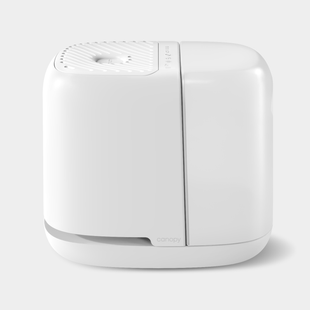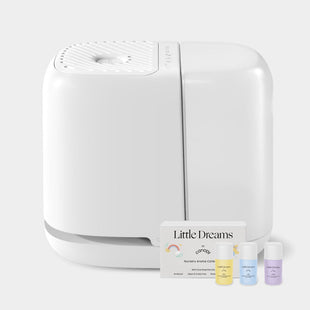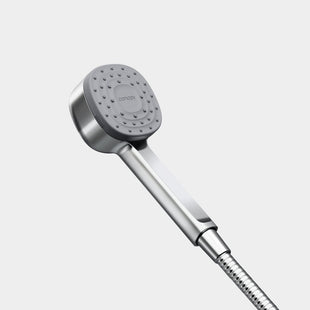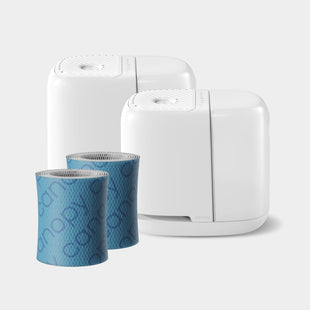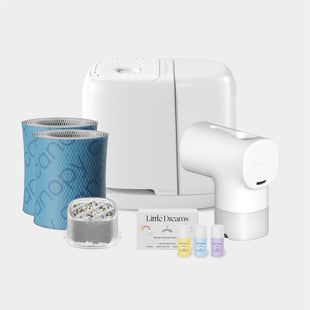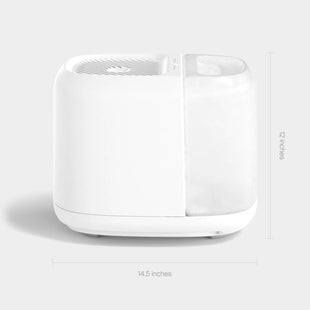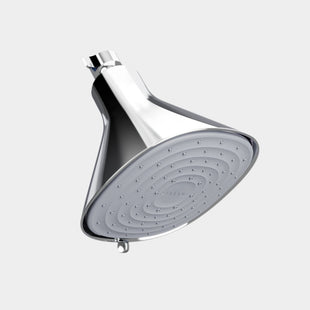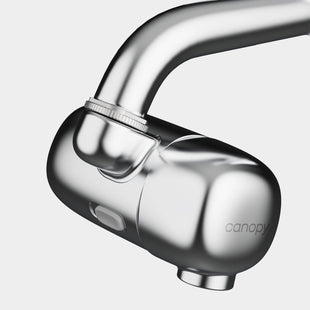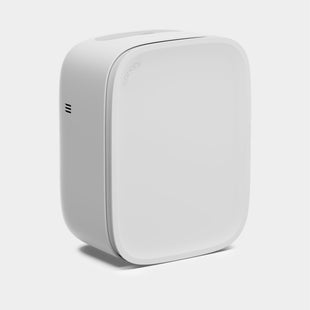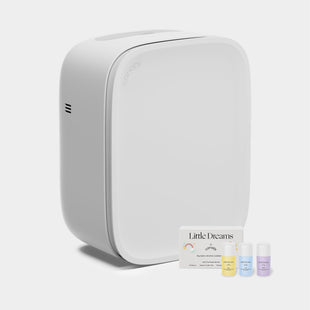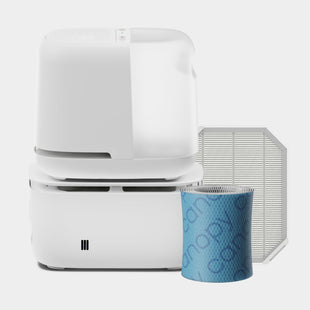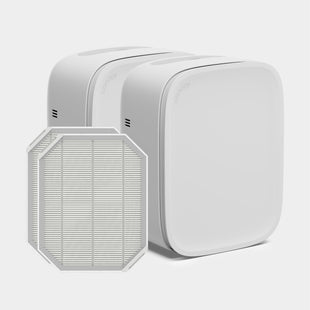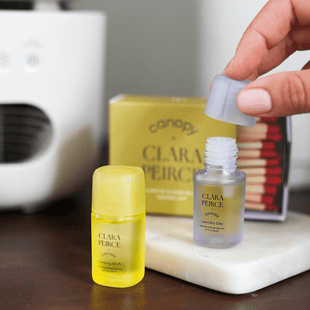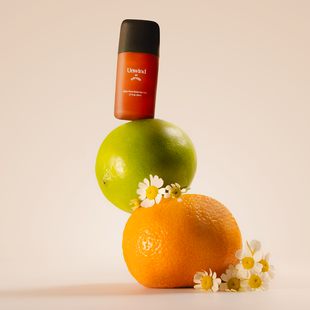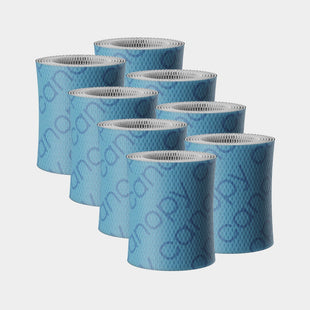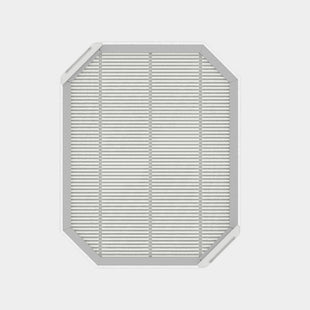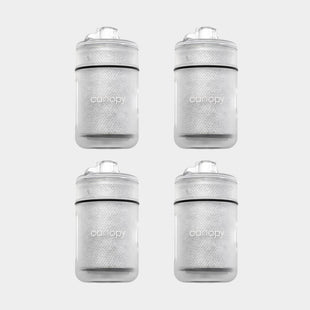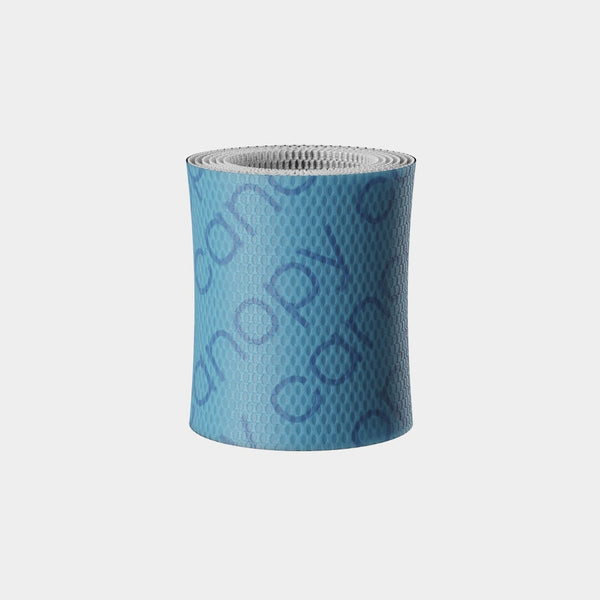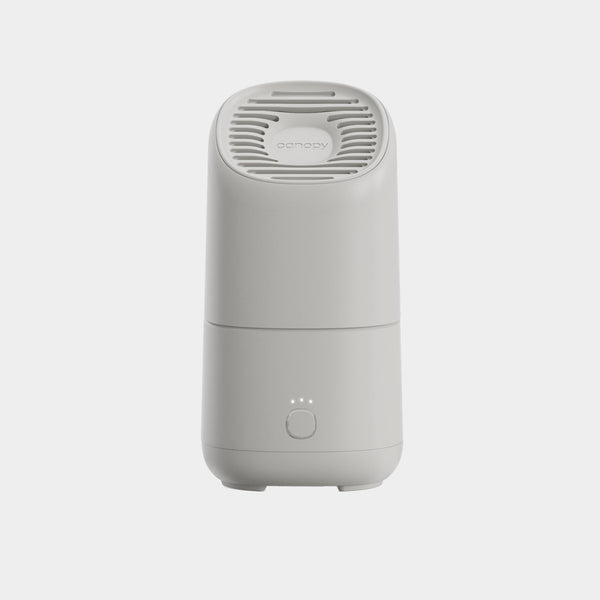Humidifiers solve the age-old problem of dry, uncomfortable indoor air, especially in the cooler seasons. But can you have too much of a good thing?
While perusing indoor humidity solutions, you might hear that having a humidifier brings you one step closer to a mold problem. But do humidifiers really cause mold?
In reality, humidifiers do not cause mold, but they can develop mold if not used properly or regularly maintained. Let's dive into the grimy details, including how to keep humidifiers from getting moldy.
What Is Mold?
“Fungus vs. mold, what’s the difference?” is a question that crosses many folks minds. Mold is actually a type of fungus found in nearly every place where there is moisture and oxygen. It plays an important role in nature, disintegrating decayed organic matter like dead trees and leaves.
Indoor mold, on the other hand, is mold that has gone rogue. It can destroy the surfaces of your home by digesting the material in order to survive.
Mold reproduces by creating airborne microscopic spores that attach to different surfaces. Spores are survivors一they last for long periods and produce allergens for years after they settle, whether alive or not.
The most common types of mold are1:
- Alternaria: Often found on consistently damp surfaces, including windows, under sinks, in showers, or in buildings with water damage. Alternaria mold appears black, dark brown, or gray with a fuzzy texture closely resembling wool.
- Aspergillus: Frequently found on walls, insulation, paper products, or clothing. It appears in various colors, including black, gray, brown, green, yellow, or white.
- Cladosporium: Appears on soft surfaces like carpets and curtains and wood surfaces like cabinets and floorboards. This type of mold is generally black or olive green.
- Penicillium: Found on surfaces or inside spaces that have frequently been in direct contact with water, including mattresses, wallpaper, and home insulation. This mold spreads easily and is identifiable by its green or bluish color. Penicillium has a musky smell that surprisingly resembles old food.
- Stachybotrys chartarum: Also known as "black mold," this is the most dangerous type of household mold. It's black, has a stale and earthy smell, and can produce toxic compounds that pose health hazards.
What Is Mildew?
While it's common to think of mold and mildew as the same beast, they're not interchangeable. Mildew is a mold or fungus with a dry, powdery texture and usually grows flat.
Mildew is lighter in color, appearing in shades of yellow, gray, and white. It might turn brown as it ages. Mildew tends to grow in small, patchy formations and has a musty, damp smell compared to mold's unpleasant, pungent odor.
How Can Mold and Mildew Affect You?
The Effects of Mold

Mold is a much bigger headache for homeowners compared to mildew. Mold can damage your home surfaces, causing rot and potentially damaging the structure of your home.
Exposure to mold can also affect your health. If inhaled, mold can trigger asthma attacks, allergy symptoms, respiratory problems, and fever2. Exposure to black mold can cause long-term effects on those with weakened immune systems3, including children, those who experience respiratory conditions4, and individuals with auto-immune diseases.
The Effects of Mildew
While it certainly isn't pretty, the effects of mildew are generally mild and won't permanently damage your home surfaces. Mildew might trigger allergy symptoms, respiratory irritation, a headache, a bad cough, or continuous coughing when inhaled.
Do Humidifiers Cause Mold and Mildew?
Tricky question. Humidifiers do not cause mold or mildew; however, they can develop if not properly maintained or if home humidity levels regularly exceed 60%.
You can prevent the development of humidifier mold and mildew by maintaining a regular cleaning schedule and monitoring humidity levels in your home.
Can Humidifiers Grow Mold?
Traditional humidifiers can create the ideal environment for mold growth in a few ways. Here are the most common causes of mold in your humidifier and how you can fix them:
- Poor maintenance: A daily wipe down, weekly cleaning, and monthly deep cleaning will keep mold at bay.
- Impure water: For most humidifiers, distilled water is highly recommended for the tank. Tap water, especially hard water with high mineral content, creates a breeding ground for mold inside the humidifier.
- Excess humidity above the optimal relative humidity (RH) range: Humidity levels above 50% create an environment perfect for mold and mildew. The RH in your home should range from 40% to 60% to ensure maximum health and safety.
- Water leakage: Water seeping from your device's water tank might cause humidifier mold on the device or the spaces surrounding your humidifier.
- Excessive output with limited space: Using a humidifier with an output of 500 square feet in a 200-square-foot room, for instance, might contribute to mold inside the humidifier. If the output is too high for a room, the walls, curtains, bedding, and other objects become drenched in excess moisture.
Canopy's Balanced Hydration
How do you keep humidifiers from getting moldy? Canopy has the key.
Our evaporative, no-mist Bedside 2.0, Nursery 2.0, and Large Room humidifiers feature Smart Persistent Airflow (SPA)™ technology, which allows smart sensors to inhibit mold growth* inside the device and keep working until the tank is completely dry. No sitting water, no room for mold growth.
Our innovative UV light technology inhibits mold growth* inside the humidifier while removing additional contaminants.
* - Mold inhibiting features only in reference to mold inhibiting within the device and does not make any claim of inhibition of mold in the environment or air. Mold inhibition test completed by third-party lab. Tested to ATCC 6275 and ATCC 16404 with Aspergillus niger.
Clean Solutions From Canopy

Traditional humidifiers breed humidifier mold and bacteria in the water tank. Our humidifiers have unique, mold-inhibiting* design where smart sensors that detect when water is still sitting in the tank automatically keep the fan running until the inside is nearly dry.
Our humidifiers have dishwasher-safe plastic components, so you spend less time cleaning your humidifier and more time enjoying the perks of pure, hydrated air.
Place all the parts that touch water (including the tank, tray, cap, and grill) in the dishwasher and run it on a normal cycle. Ensure all your humidifier components are completely dry before reassembling your device.
If you don't have a dishwasher, no problem! Our upgraded Nursery and Bedside humidifier tanks feature a large, easy-to-access opening for handwashing.
The Nursery 2.0 and Bedside 2.0 humidifiers also contain antimicrobial filters that catch dust, dirt, and particles that would otherwise end up in your air or lungs. Water evaporates off the Large Room Humidifier's paper filter, ensuring contaminants don't end up in the hydrated air.
Changing our humidifier filters is easy. We recommend a filter replacement every 5–7 weeks. The "Filter" light on top of your unit will illuminate as a convenient reminder when it's time for a swap. Simply remove the old filter, add the new one, and hold the "On/Off" button for 30 seconds to reset the filter indicator light.
For peak performance and longevity, air out your filter once a week. To make filter replacement totally hassle-free, we offer Filter Subscriptions. Sign up to receive a new filter at a discounted price every 6 weeks!
Finally, give the body of your humidifier an occasional wipe down with a warm cloth, and you're good to go. That's really it. So easy, so simple.
Enjoy Convenient, Clean Hydration
Built-in sensors to prevent excess moisture, easy-to-clean plastic components, and filter multipacks and subscriptions for convenient replacement are only a few of the standout features you'll experience using our humidifiers. Discover the complete collection, including our Portable Humidifier, which runs on cool mist technology, releasing a fine, light mist for balanced moisture wherever you go.
*Mold inhibition limited to device interior. Does not treat air or environment. 3rd party lab-tested with Aspergillus niger (ATCC 6275, 16404).
Sources:
-
(26 Sept. 2024). Mold. U.S. Centers for Disease Control and Prevention. Retrieved February 21, 2025, from https://www.cdc.gov/mold-health/about/
- (21 June 2021). Mold allergy. Mayo Clinic. Retrieved February 21, 2025, from https://www.mayoclinic.org/diseases-conditions/mold-allergy/symptoms-causes/syc-20351519
- (31 March 2023). Black Mold. Cleveland Clinic. Retrieved February 21, 2025, from https://my.clevelandclinic.org/health/diseases/24862-black-mold
- Questions About Mold. Boston Children's Hospital Pediatric Environmental Health Center. Retrieved February 21, 2025, from https://www.childrenshospital.org/programs/pediatric-environmental-health-center/patient-resources/questions-about-mold


